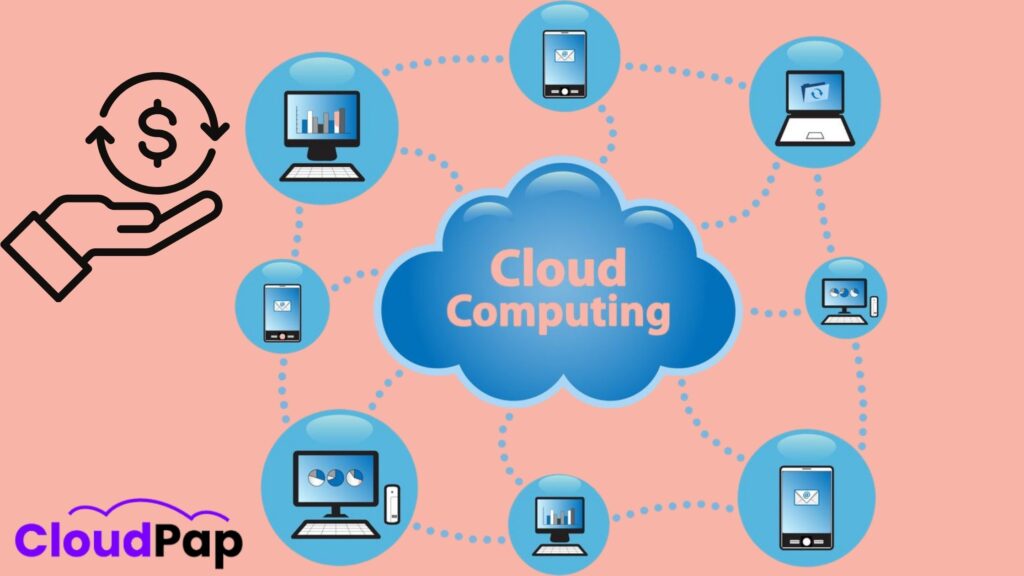Last updated on August 28th, 2025 at 12:44 pm
Cloud computing has really changed how businesses run nowadays. Instead of buying expensive hardware and maintaining bulky physical servers, with just a few clicks, you can launch servers, deploy applications and even scale resources instantly.
It all feels seamless, until the invoice arrives. That is when the excitement often turns into frustration. If you have ever looked at your monthly statement and wondered why running a seemingly simple app or website comes with such a hefty bill, you are not alone.
The cloud computing cost problem is hitting startups, agencies, and enterprises alike. Providers have made access easy, but as usage grows, so do expenses, sometimes to shocking levels.
Here is the good news, managing your cloud hosting cost doesn’t have to mean cutting performance or abandoning growth. With the right strategies, you can reduce your bill, sometimes by as much as 50% while still maintaining top performance for your business. Let us break down the steps.

Table of Contents
1) Stop Paying for Resources You Don’t Use
Cloud services are billed on resources like CPU, RAM, and storage. The issue? Many businesses pay for more than they ever use. Imagine ordering an all-you-can-eat buffet and only eating a small plate, you are paying for far more than you actually consume.
For example, if your virtual machine is sized with 8 CPUs but your workload barely touches 20% of them, that means 80% of your cloud hosting costs are wasted. This happens more often than you’d think because companies tend to over-provision just in case.
Fix: Regularly audit your usage reports. Check CPU, memory, and disk utilization over a 30-60 day period. If your workloads never reach peak usage, resize to a smaller instance. Even a one-step reduction in server size can reduce your cloud hosting costs significantly.
2) Switch to Reserved or Long-Term Plans
Month-to-month pricing may look flexible, but it is actually one of the most expensive ways to pay for cloud services. Cloud providers reward loyalty, if you commit for one or three years, you unlock serious discounts.
For example, a reserved instance or annual plan can cut costs by 40-60% compared to on-demand pricing. If you are confident that your business will still be running its apps or websites in the long term and most are, locking in a longer plan is a no-brainer.
Steps to take:
- Check your provider’s reserved or prepaid plans.
- Compare the cost savings of 1-year vs. 3-year commitments.
- Choose the plan that balances budget savings and flexibility.
This simple switch can save thousands annually while ensuring predictable billing.
3) Use Auto-Scaling Instead of Always-On Servers
Leaving your servers always on is like running your air conditioner 24/7, even when you are out of the house. Many businesses overpay by keeping full power running during low-traffic periods.
Auto-scaling changes that by dynamically adding servers during peak hours and scaling back when demand falls. For example, an online store may need heavy resources on weekends but much less on weekdays. Auto-scaling ensures your cloud hosting costs reflects real demand, not wasted capacity.
The smarter approach: Enable auto-scaling policies on your hosting platform. You can also schedule workloads to pause during downtime, like shutting off development servers at night.
4) Move Storage to Cheaper Options
Storage costs are one of the biggest hidden drivers of cloud bills. Providers charge premium rates for hot storage that is designed for frequently accessed files. But many businesses keep old backups, logs, or infrequently used files on expensive storage.
A smarter way is to separate hot and cold data. Keep frequently accessed files on fast storage, but move rarely accessed files to cheaper cold storage tiers or archival solutions.
How to optimize storage costs:
- Classify your data into hot (frequently accessed) and cold (rarely accessed).
- Keep hot data in fast SSD storage for performance.
- Move cold data to cheaper options like object storage, archival storage, or external backup solutions.
This small change can reduce your cloud hosting costs dramatically without affecting performance.
5) Watch Out for Hidden Bandwidth and Transfer Fees
Bandwidth is where many businesses get blindsided. Moving data between regions, downloading backups, or serving content to global users often comes with extra fees. These charges are easy to overlook, but they can add thousands to your annual bill.
For instance, hosting your application in one region while most of your customers live in another leads to costly cross-region transfers.
Fix: Keep workloads close to your users by selecting the right region. Also, deploy a Content Delivery Network (CDN) to serve cached content locally. Through cutting unnecessary transfers, you will keep your cloud hosting costs lean and predictable.

6) Use Open-Source Tools Instead of Paid Add-Ons
Providers make money by offering extras, monitoring, security, and analytics services. While these are convenient, they are often overpriced compared to free or open-source alternatives.
For instance, instead of paying for premium monitoring, you could use Grafana or Prometheus. Instead of paying for SSL certificates, you could integrate Let’s Encrypt. By swapping out add-ons, businesses often save hundreds per month and still enjoy the same level of functionality and security.
Before subscribing to paid add-ons, research free alternatives thoroughly. You will likely find a powerful open-source tool that performs the same job, sometimes with even more flexibility. Making this switch is a quick way to lower your cloud hosting costs without compromise, while also giving your business greater control over customization and upgrades.
7) Consolidate Your Cloud Providers
Juggling multiple cloud providers may seem like a smart way to spread risk, but in practice, it leads to overlapping services and higher costs. Managing AWS, Azure, and Google Cloud simultaneously often results in duplicate expenses.
Why consolidation helps:
- A single provider often gives volume discounts.
- Easier to manage and optimize costs with one dashboard.
- Reduces complexity for your IT team.
If possible, streamline your cloud strategy to fewer providers, or even just one trusted partner. This not only makes billing simpler but also helps you monitor usage more closely, negotiate better deals, and directly lower your overall cloud hosting costs in the long run.
8) Negotiate With Your Cloud Provider
This tip surprises many business owners, you can actually negotiate cloud pricing. Providers want to keep long-term customers. If your monthly bill is large enough, or if you are a growing startup, they may offer credits, discounts, or custom packages.
Even smaller businesses can sometimes qualify for special programs, especially if you are in an industry the provider is targeting.
How to approach it:
- Contact your provider’s sales or support team.
- Ask about startup credits, promotional deals, or volume-based discounts.
- If you have been a long-term customer, use your loyalty as leverage.
It never hurts to ask, and the savings can be substantial. In some cases, a short conversation with your provider could trim thousands off your yearly bill, making this one of the simplest yet most overlooked ways to reduce your overall cloud hosting costs.
9) Use Cloud Cost Management Tools
Trying to monitor cloud expenses manually is like guessing your electricity bill without a meter. You might think you know where the money is going, but without tracking, you are often wrong.
Cost management platforms like Spot.io, CloudHealth, or native dashboards (AWS Cost Explorer, Azure Cost Management) reveal exactly where resources are being consumed. They help identify idle workloads, oversized servers, and unnecessary spending.
Fix: Set automated alerts for spending thresholds and review dashboards weekly. You can even schedule monthly reports to compare trends and forecast future expenses. This visibility not only makes it easier to control your cloud hosting costs, but also empowers you to make smarter decisions before wasteful patterns become expensive habits.
10) Switch to Affordable Alternatives Like Cloudpap
Big providers such as AWS, Azure, and Google Cloud dominate the industry, but their size often comes with trade-offs, higher prices, complex billing structures, and customer support that can feel impersonal. For many businesses, this translates into bills that rise faster than their actual usage or growth.
That is why exploring specialized alternatives can make sense. Providers like Cloudpap focus on delivering reliable performance with simpler pricing models and more accessible support.
For small to medium-sized businesses in particular, switching can mean cutting cloud hosting costs significantly while still maintaining the flexibility and power you need to run applications smoothly.
Fix: Compare your current monthly invoice with Cloudpap’s pricing. The difference could be the easiest way to slash your cloud hosting costs without making any technical changes at all.

Take Back Control of Your Cloud Bill
The cloud should empower growth, not drain resources. Through trimming unused capacity, moving cold storage, optimizing bandwidth, and exploring alternatives like Cloudpap, businesses can significantly reduce their cloud hosting costs.
You don’t need to downgrade performance or compromise reliability. All it takes is a smarter approach to resource management and the willingness to switch to providers that actually care about affordability.
So the real question is, why keep overpaying when you could redirect those savings into innovation, hiring, or marketing?
👉 Ready to slash your cloud hosting costs? Explore Cloudpap’s affordable cloud hosting plans today and discover just how much you can save.

